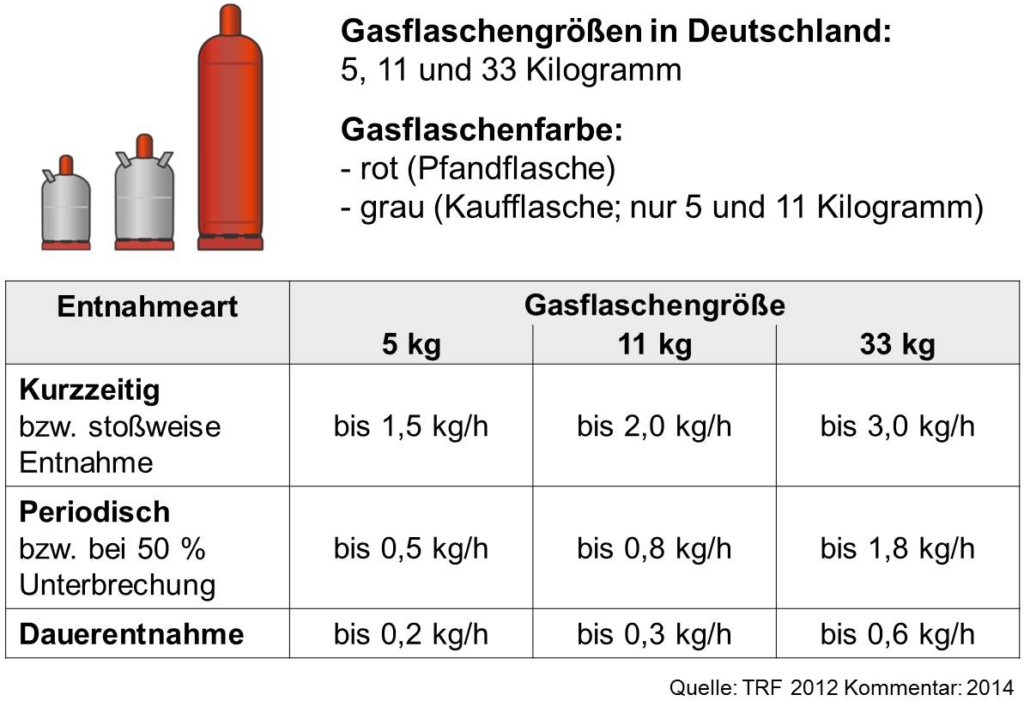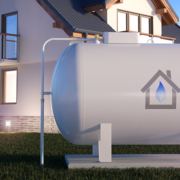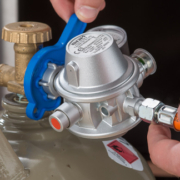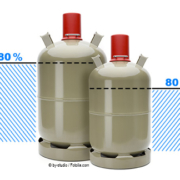How do I find out the number of cylinders required for an LPG cylinder system?
The type and amount of gas cylinders you require for a cylinder system depends particularly on two factors: the output of the gas equipment and the maximum gas cylinder withdrawal output. We’ll show you what you need to look out for.
Is a two-cylinder system sufficient or should I use four cylinders to be on the safe side? Or even more to have some leeway? These and similar questions arise again and again when planning an LPG cylinder system. We often receive calls reporting that the newly-installed system is not running satisfactorily. It often depends on the fact that the withdrawal output from the gas cylinders cannot keep up with the required capacity of the gas equipment, i.e. the system is undersized.
Output of gas equipment
No matter whether you want to operate a gas stove, a gas boiler, a radiant heater or several devices together, at the beginning you have to find out the output of these. The output is usually given in kilowatts (kW) and you will find the corresponding number on the type label of the device. If you want to operate several pieces of gas equipment via one cylinder system, you must add the gas stove, gas boiler etc. output ratings together.
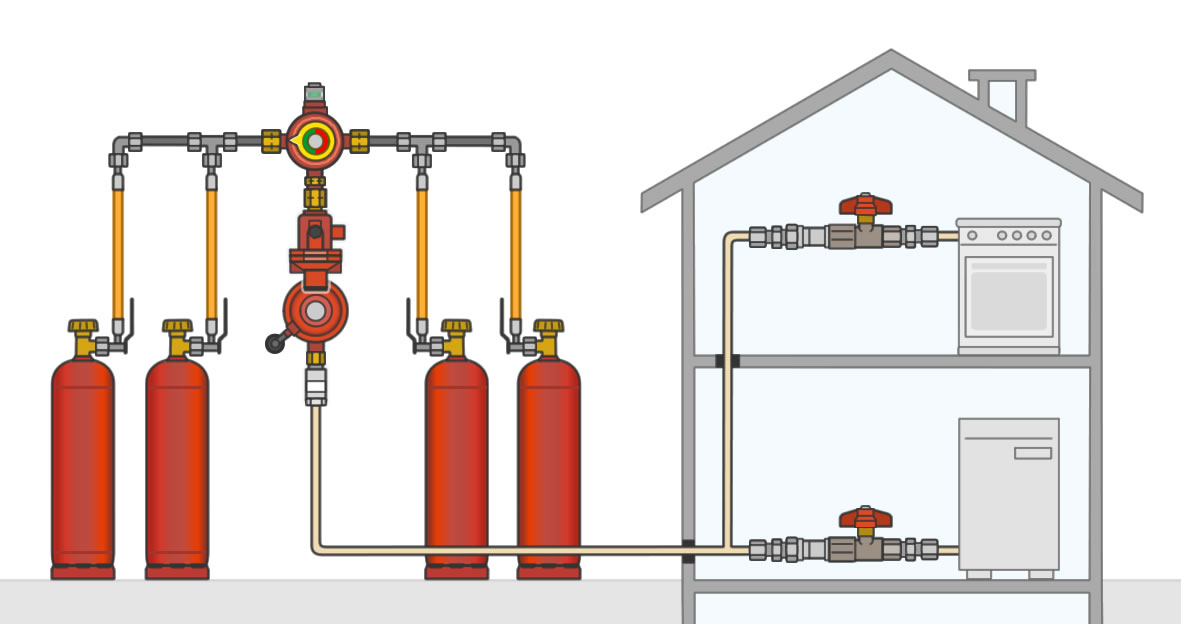
Connection diagram of a four-cylinder system with automatic changeover between the operating and reserve sides.
You must now convert this kilowatt number to the corresponding value in kilograms per hour. Both the output of the pressure regulator as well as the withdrawal output from gas cylinders are indicated there and must at least correspond to the consumption value of the system. In this article, you can read how many kilowatt hours correspond to one kilogram of LPG and convert the value.
Let’s assume that you want to extend the cylinder system to several pieces of gas equipment which add up to 20 kilowatts of output. This value corresponds to approx. 1.55 kilograms of LPG per hour.
Withdrawal output
You now know how many kilograms of LPG you need per hour and can select which and how many gas cylinders you are installing. Important for this step: You must know about the maximum withdrawal output from the different gas cylinders. The following is a guide :
 Under full load
Under full load
To stay with our example: We have calculated that for proper operation 1.55 kilograms of LPG per hour are required. If you now plan for the gas equipment to work continuously at full load – this always requires the 1.55 kilograms per hour – a mere 33-kilogram cylinder is not sufficient.
You need at least three gas cylinders in operation at the same time, i.e. a six-cylinder system (operating and reserve side) for an uninterrupted supply. You can permanently draw a maximum of 0.6 kilograms of LPG per hour from a 33-kilogram cylinder. This is why you need the three cylinders, to achieve the required quantity of 1.55 kilograms per hour.
You can find more information about LPG cylinder systems and their components in this article: Which GOK products do I need to operate several LPG cylinders at the same time?
Adjusting the dimension
By the way, the general calculation basis is always the same, no matter what application you plan for an LPG cylinder system.
If you do not plan the system to run permanently at full capacity, you can adjust the dimensions of the cylinder system accordingly. The values can be found in the table. Please note, however, that this is approximate information. The actual values may differ due to location factors.
